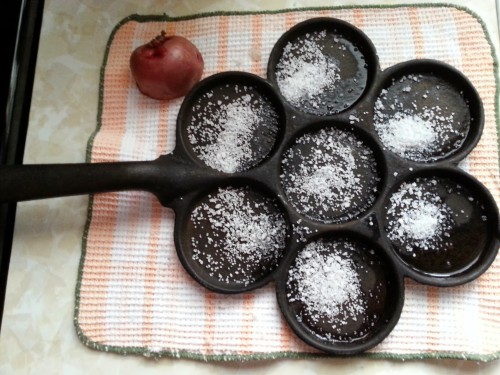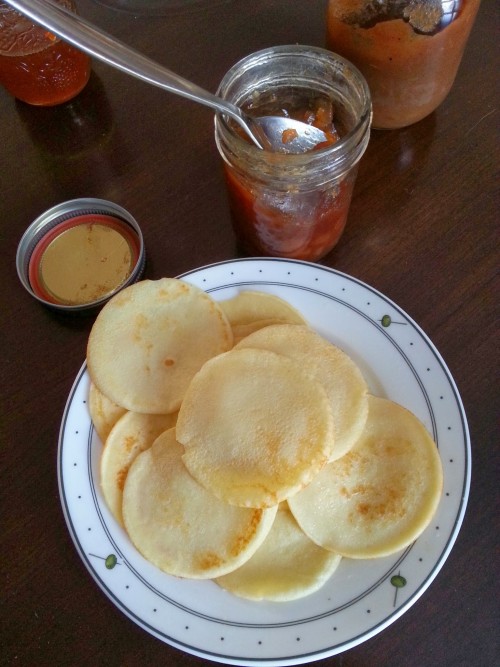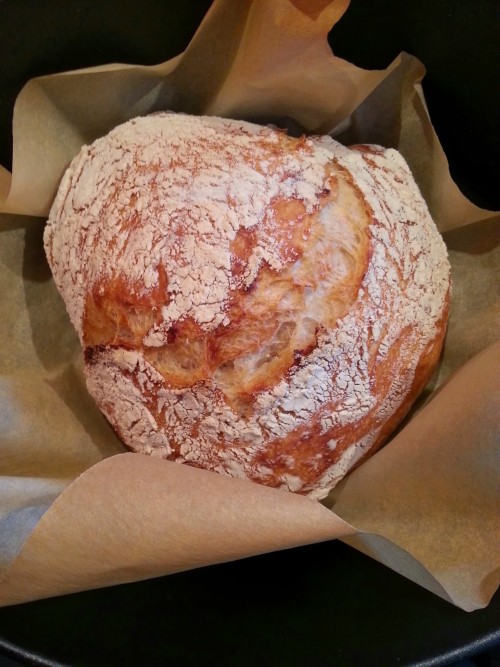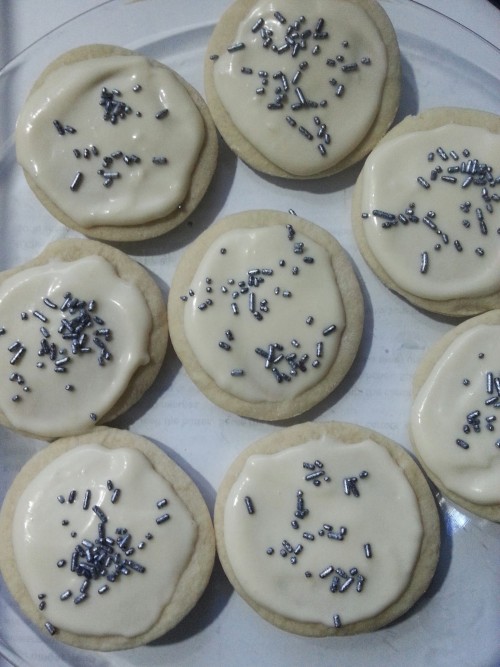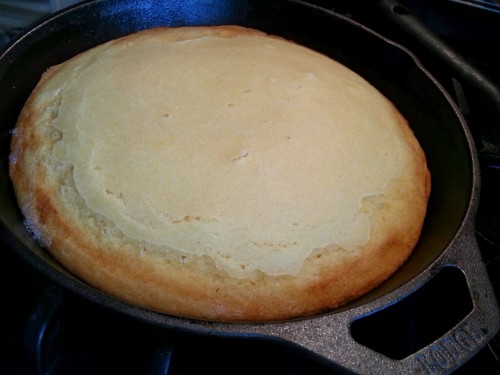
Buttery!
My husband loves cornbread. I don’t have any objections to it – it’s usually sweet and buttery, and I’m good with that – but I don’t seek it out or get excited by the idea of it.
Having recently acquired a 10″ cast iron skillet, I decided that my first recipe would be cornbread. It was easy to make, it turned out wonderfully, and I ate several pieces. More than my husband. Next time I’ll add some minced jalapenos!
Here’s the recipe:
Skillet Cornbread
Makes one lovely round 10″ loaf of cornbread (see notes)
1 1/4 cups ground cornmeal
3/4 cup flour
1/4 cup white sugar
1 teaspoon sea salt
2 teaspoons baking powder
1/2 teaspoon baking soda
1/3 cup whole milk
1 cup buttermilk
2 eggs, lightly beaten
1/4 cup of unsalted butter (melted)
Directions:
- Preheat the oven to 425F. Put the cast iron skillet into the oven to heat while you’re preparing the batter.
- Mix the cornmeal, flour, sugar, salt, baking powder, and baking soda together. Stir in the milk, buttermilk, and eggs.
- Add almost all of the melted butter, stirring. Save about a tablespoon of melted butter for slickin’ up the skillet later!
- Remove the hot skillet from the oven and drop the oven temperature to 375F.
- Coat the bottom and sides of the skillet with the remaining melted butter. Use a basting brush to coat the sides.
- Pour the batter into the skillet and bake in the centre of the oven for about 17 minutes. (See notes)
- The cornbread is done with the centre is firm and a toothpick comes out clean.
- Allow to cool slightly before serving.
Notes:
You could make this in a larger, or smaller, skillet – for a smaller skillet, add time. For a larger skillet, decrease time. Just keep an eye on it!
